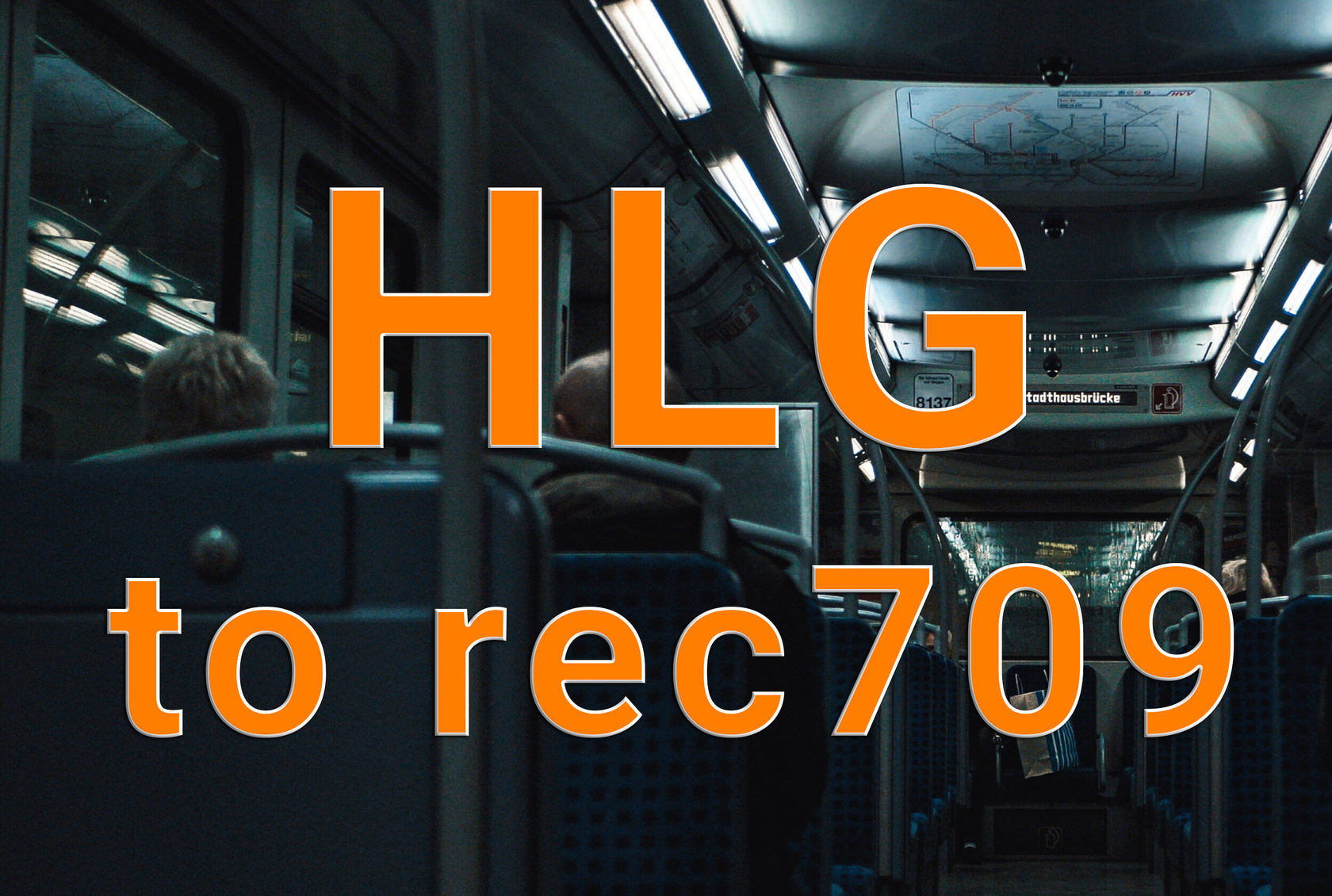In the world of expensive cameras like the Sony A7s III and Canon EOS R5, there are those who use Canon’s budget cameras like the Canon Ti Series, SL series, etc. With those cameras, there’s a common picture profile being used called Prolost Flat. It’s good and all, but the most difficult thing about it is getting the footage to look great while editing. That’s were LUTS come into play.
(Downloadable Prolost Flat to Linear LUT can be found below.)

First off, What is Prolost Flat?
Prolost Flat is a modified Neutral Picture Style with these settings.
- Sharpness set to zero
- Contrast set to all the way to the left
- Saturation set two notches to the left
- Color tone set to zero
This profile has less contrast and saturation to help preserve information within your cameras dynamic range, specifically in the highlights and the shadows.
Sony S-Log3 and S-Log3 SR Live (BT.2020 colour) to BT.2100 HLG, thereby matching the colour and 'look' of BT.2100 HLG cameras Test LUTs to verify the correct operation of LUT hardware. I'm wanting to use some LUTS on some footage I shot with the picture profile Cine 2. Is there a utility/input LUT that I can/should use before applying a creative LUT? It seems most input LUTS I've found are for s-log 2.
Linear LUT for Prolost Flat
Lowering the contrast in cameras causes the shadows, mid tones, and highlights to curve. As a result, grading straight from a flat footage doesn’t always have a favorable look just by bumping up the contrast and saturation. Bumping the contrast and saturation only stretches the waveform generally from the mid tones out towards the highlight and shadows. Instead the footage should be converted into a linear color space first.

Here are some test shots from Prolost Flat to Linear.
Adding the LUT causes the flat video to have a bit more color and better contrast than Prolost Flat to have a starting point for the color grading process. Keep in mind the contrast and saturation controls were not used during the making of the LUT. The only thing that changed was the curve.
Download the Prolost to Linear LUT here.


What Now?
Assuming that you exposed and white balanced your footage, you can bump up the saturation and contrast as you like and grade the footage after adding the LUT.
Enjoy!
Additional Information
The Linear LUT will only work on the Prolost Flat Picture Profile with specific settings:
18% Grey @ 50% IRE for ProlostFlat_to_Linear_EV0.cube
18% Grey @ 62.5% IRE for ProlostFlat_to_Linear_EV1.cube
This LUT was create by me and I’m not claiming to be a professional colorist or a LUT creator. I made this LUT for experimentation and will continue testing. If you would like to support the continuation and making of the LUT feel free to message me!
If you would like to get a hold of a Prolost to Rec.709 LUT visit Adrian Bacon’s article.
Q&A
Is this a conversion LUT to Rec.709?
Not necessarily, but take is as you will. I don’t have Rec.709 to compare with Canon’s sRGB color space so I won’t call this Prolost to Rec.709, but Prolost to Linear.
How did you come up with this LUT?
Gerald Undone, a youtuber, has made a very informative video on Common Log Grading Mistakes. I took information from his video and created the LUT.
Why does the 11-Step Gray Scale image look like that?
The 11-Step Gray Scale image I shot isn’t the true dsclabs 11-Step Gray Scale Chart. It’s a screenshot image of the 11-Step Gray Scale Chart. Although it may not be it’s true color I had to work on the Prolost Flat footage relative to my camera’s Neutral Picture Profile, not the screenshot image. This keeps a consistent curve conversion.
One thing that may be flawed is the light coming from the monitor itself effected the 11-Step Gray Scale screenshot. Monitors are known to be inconsistent with exposures while look at the monitor at different angles.
Since the year 2000, Sony has been developing digital motion picture cameras and supporting products for the digital cinematography community under the CineAlta brand.
Sony S Log2 To Rec 709 Lut Sony Fs7
During this time Sony designed and published its original “S-Log” curve, integrating this into the camera to allow them to capture scenes with exceptionally wide latitude. As digital cinematography standards have evolved and technologies improved, new camera models have been introduced with improved S-Log curves, S-Log2 and more recently S-Log3, greatly enhancing the latitude and dynamic range capabilities of the newer cameras.
Over the years Sony has also introduced new, wide color spaces. S-Gamut3.Cine is one such color space, wider than the DCI P3 color space used for digital movie projection.
Both S-Log3 and S-Gamut3.Cine provide huge dynamic range and color space capabilities within the camera which can be used to capture material that provides post-production with the widest creative freedom and control.
Canon Rec 709 Lut Download
However these technologies present a problem for those working on-set, in dailies and in post-production. Specifically, how to review material shot in S-Log3/S-Gamut3.Cine on a standard monitor designed to operate in a conventional Rec.709 dynamic range and color space.
